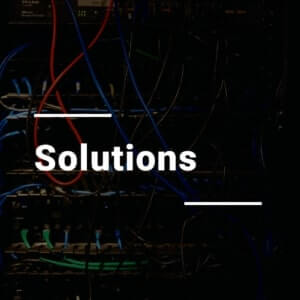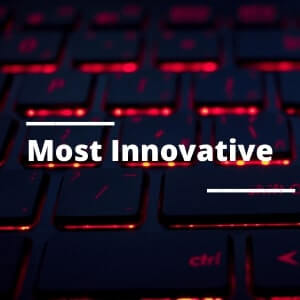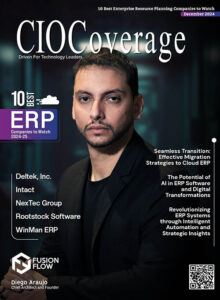 As an executive in the tech industry, I’ve witnessed the evolution of digital transformation and its impact on organizations up close over the last 10-15 years.
As an executive in the tech industry, I’ve witnessed the evolution of digital transformation and its impact on organizations up close over the last 10-15 years.
The concept of using technology to enhance customer connections and improve outcomes has been a driving force for many years. But I believe we are now entering a new era that may take this idea to unprecedented heights — the era of digital Twin.
Digital twin technology has the power to revolutionize the way organizations operate and interact with each other and with their customers. It might be one of the most exciting areas of the mixed reality space at the moment, showing the potential that can be unlocked when the digital and physical worlds work together in harmony.
By creating virtual replicas of physical products or systems, organizations can enable their customers to test and customize products digitally, granting them greater control and personalization. They can enable real-time, data-enhanced collaboration between R&D experts inside their organization, and among partners, eliminating the need for endless rounds of physical iterations in testing.
Organizations make decisions based on outcomes like these.
What is driving the adoption of digital twin technology?
In the past, the technology experts among an organization’s C-suite — the Chief Information Officer (CIO), Chief Digital Officer (CDO), Chief Technology Officer (CTO) — focused on providing technology to support daily operations.
Years ago, I had a conversation with a marketing leader who shifted my perspective on the industry. They expressed a desire to be the one telling the IT department what they needed, rather than being dictated by what the IT department had available. It was an eye-opening, reversed way to look at the technology industry.
Ever since then, I’ve seen many organizations develop on this track. Departments like sales, marketing, R&D and more began to tell their IT departments what they needed to get their jobs done.
But every so often there came a paradigm shift that the IT department could take leadership in, like implementing APIs, driving security, migrating to the cloud.
Another shift like that is here. Technology leaders now have the potential and the responsibility to push their digital transformation journey to its next stage. If they can show how leveraging technology such as digital Twin and generative AI will work to deliver inspiration and innovation for their organization (especially faster and cheaper than for their competitors), many organizations are prepared to fund the venture.
It comes down to shifting the focus of IT from providing functionality… to providing delight.
Today’s implementations of digital Twin
Digital Twin have already found diverse applications across various industries. Lenovo has been involved in digital twin projects in healthcare, factory maintenance and optimization, worker safety and process efficiency, and virtualizing shopping and customization experiences. Manufacturing, real estate, oil and gas, retail organizations and more are leveraging this technology to optimize operations, enhance decision-making, collaborate, connect deeply with customers, and drive research and innovation.
I recently met with a Lenovo customer who has implemented digital twin technology for paint color analysis in the automotive industry. Instead of testing paint swatches on multiple rounds of physical prototypes, they created a digital twin environment to enable collaboration between researchers and manufacturers at different companies and different locations. This allowed them to fast-track the evaluation of color, aerodynamics, materials, production processes, and more. The quality of the project improved significantly, eliminating the need for repetitive and time-intensive iterations.
Of course, many industries already utilize computer-aided design (CAD) modeling and simulations for testing products and concepts. But digital Twin bring an added advantage. By integrating sensor data from the Internet of Things (IoT), digital Twin can run simulations based on real-world, real-time information from their physical twin. The synergy between the physical and digital realms enhances the power and usefulness of simulations, enabling organizations to make faster, more confident, more informed decisions.
Consider “The Line” in Saudi Arabia — an ambitious proposed ‘eco-city’ featuring 100-mile-long mirrored skyscrapers with future-thinking elements like carbon neutrality, its own microclimate, and advanced public transport systems. Building such a project in the digital world first would allow experts to collaborate and pool real-world data on traffic, architecture, climate studies, social psychology, and more. They could perfect the digital twin before construction ever begins, saving time, money, and resources, streamlining complexity and mitigating risks.
From today’s applications to tomorrow’s possibilities
That’s just one example of possibility when it comes to digital Twin. I believe these possibilities are boundless. They will evolve year by year as both the technology does, and the organizations using it explore further.
Competitive advantage in many industries now comes down to pennies. Making a digital twin of a burger, for example, sounds like a vanity project. But if your organization is the one to use that digital twin to model a better burger, save a penny on the dollar for every burger made, and billions of burgers are made every day around the world, that’s a lot of pennies.
Climate change applications may have great potential for digital twin technology. While preventing further climate change is vital, we must also seek to understand how to better live in the changed climate we have. Using digital Twin of affected regions and real estate plans, organizations can simulate and test various scenarios, enabling experts to design buildings and infrastructure that can withstand more or bigger hurricanes, floods, wildfires, earthquakes, and extreme temperatures. Harnessing the power of digital Twin, organizations and nations can build back better and create more resilient communities.
There’s no way to restore lives and livelihoods already lost to climate change. But instead of spending billions rebuilding after natural disasters, we can and should invest in proactive measures, using smarter technology to design future cities with purpose.
Building momentum
The momentum behind digital twin technology is palpable. It’s being adopted worldwide, with global companies across North America, Europe, and the Asia-Pacific region exploring and embracing its potential.
In order to take advantage of this momentum, organizations must not only invest in compute power and hardware but also foster imagination, curiosity, and an insatiable hunger for innovation. Industries involved in physical collaborations in manufacturing, and industries already experiencing disruption, are especially ripe for digital twin adoption.
The story of digital twin technology begins but doesn’t end with what organizations are doing today. While there are currently some very powerful applications, this tool’s true power lies in the infinite possibilities it offers across potential applications and use cases, in many areas of our world and lives — maybe even those we can’t yet imagine.
The era of digital Twin holds immense promise for organizations seeking competitive advantage, value-driven outcomes, and collaborative impact.
When we talk about digital Twin with customers, we learn almost as much from them and what they need as they learn from us about how to implement it. We always start with thinking, and we always start with what’s already out there, what other customers are already doing – and then we use that to springboard into what this customer might want to do.
















